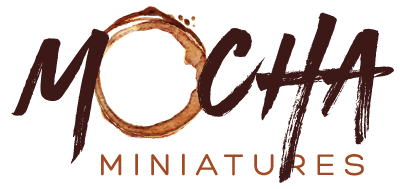My Restart Day was a success– I painted for about 8 total hours this weekend! I made some great progress in prepping some new miniatures as well as tackling one of the biggest challenges that's plagued me for awhile: Gold Non-Metallic Metal (aka "NMM"). I've been experimenting with both True Metallic Metals in bronze & silver (Ursula and Lord Ironraven respectively). However, I've been dabbling very little with Non-Metallic Metals (in fact, my only real NMM attempt has been Gus's monochrome chains) so this weekend I attempted to paint a rich gold on the Janna the Wanderer Reaper Miniature.
At first, I re-watched the NMM chapter Darksword's "Masterworks Miniatures Painting with Jessica Rich". I love Jessica's painting style and I've had the pleasure of meeting her in person and taking two of her classes at ReaperCon. She's an incredibly talented painter, a wonderful teacher, and a very nice person. While I don't own any of her go-to paint colors for gold (Terra Nova Tundra, anyone?), I attempted to find something similar. However, my color theory could use some work! At first, I made the mistake of thinking "Gold = Yellow". Well, yes and no. I chose a bright punch-you-in-the-face-yellow that didn't mix well with any of the browns that I used to darken it. I thought, "It's too yellow. It needs to be warmer and more orange" so I added a rusty brown. Nope, even worse. Now the metal just looked like an unnatural burnt orange. Finally I scrapped that idea, took a break, and went back to the drawing board. I looked up a few examples of gold and decided I wanted something with a green/brown tinge to it rather than something with a yellow/red rust color. After that, I landed on the right combination– just a small touch of yellow along with a yellowy-brown and an off-white for the highlights. I'm not saying it's the perfect combination, but it worked well enough for me for this first gold NMM attempt. I'll be sure to experiment with other colors– including the combination Jessica suggests for the rich, warm gold color she paints so well! Here was my original inspiration:
Jason Chan has created some truly beautiful art for Magic The Gathering. I love this image of the Deathpact Angel– it's a wonderful example of a muted gold. While I chose to bump up the gold on my miniature with a bit more yellow, this image helped me identify where the light would fall on a metal bodice. I'd love to paint one of the Darksword winged miniatures I have in this muted gold paired with dark grey/purple wings. Without further ado, here's some Work-In-Progress pictures of Janna and my first attempt at gold non-metallic metals:
BASE COATS + SKIN + LINING
GOLD NMM: Work In pRogress
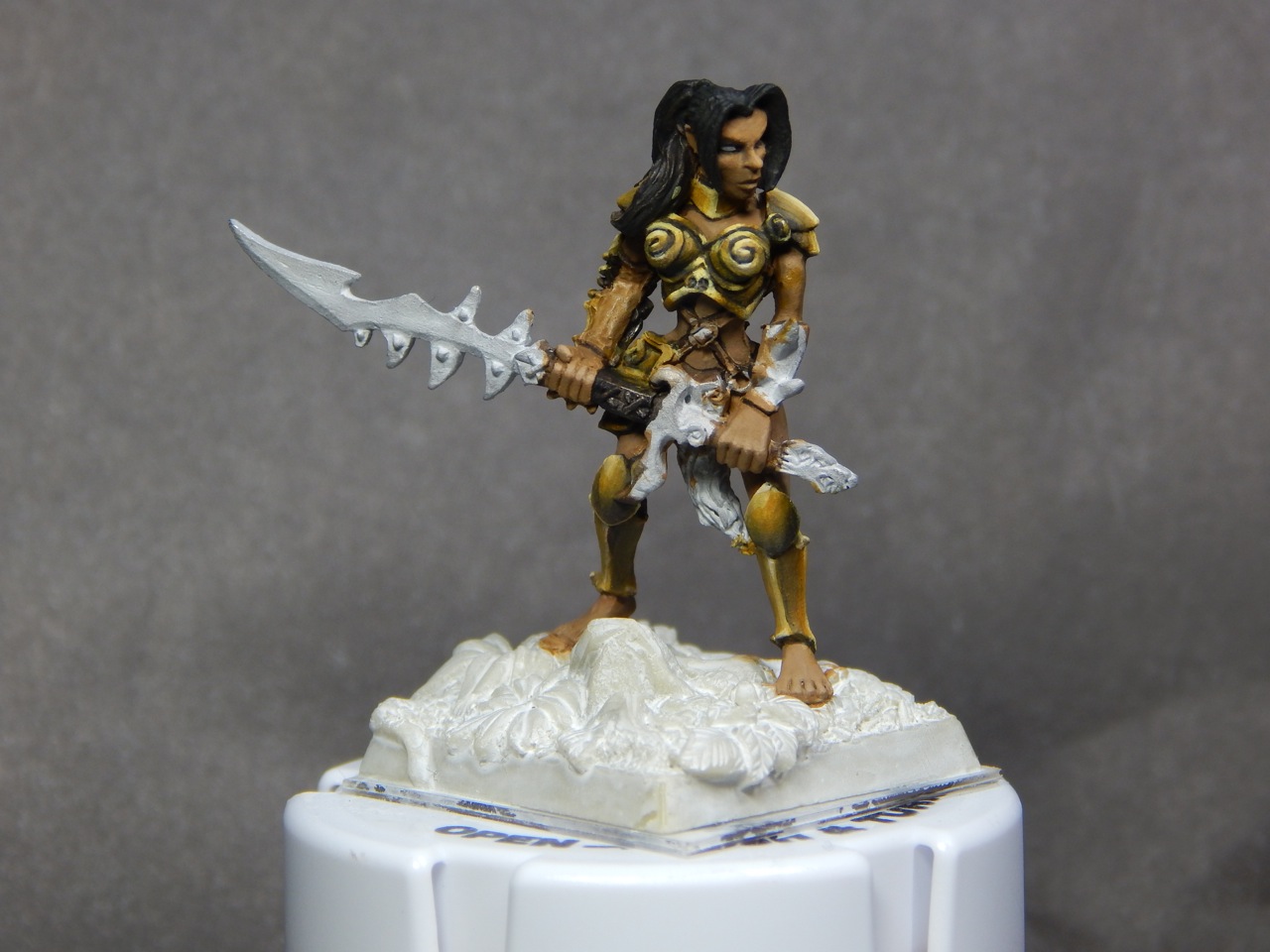
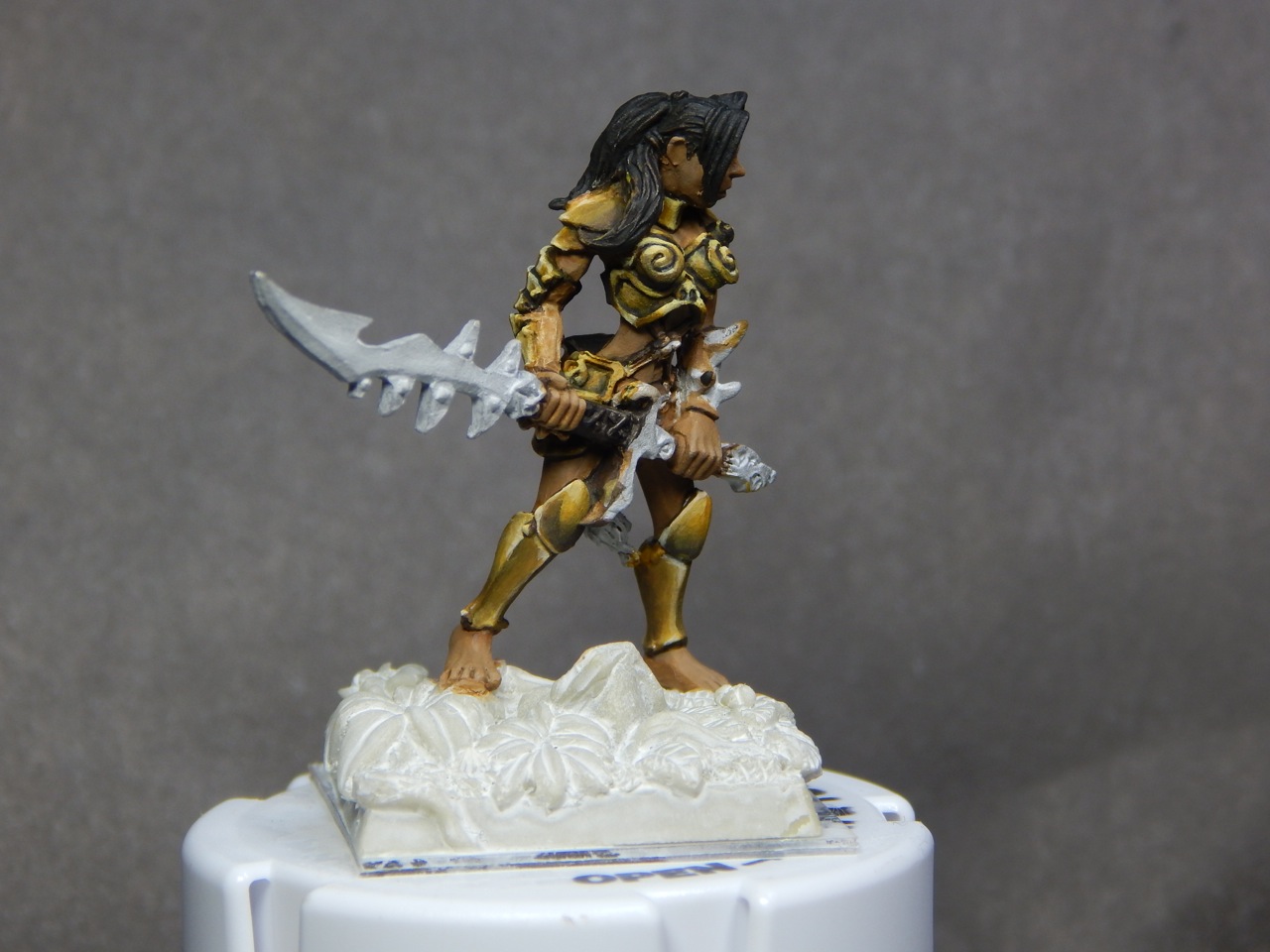
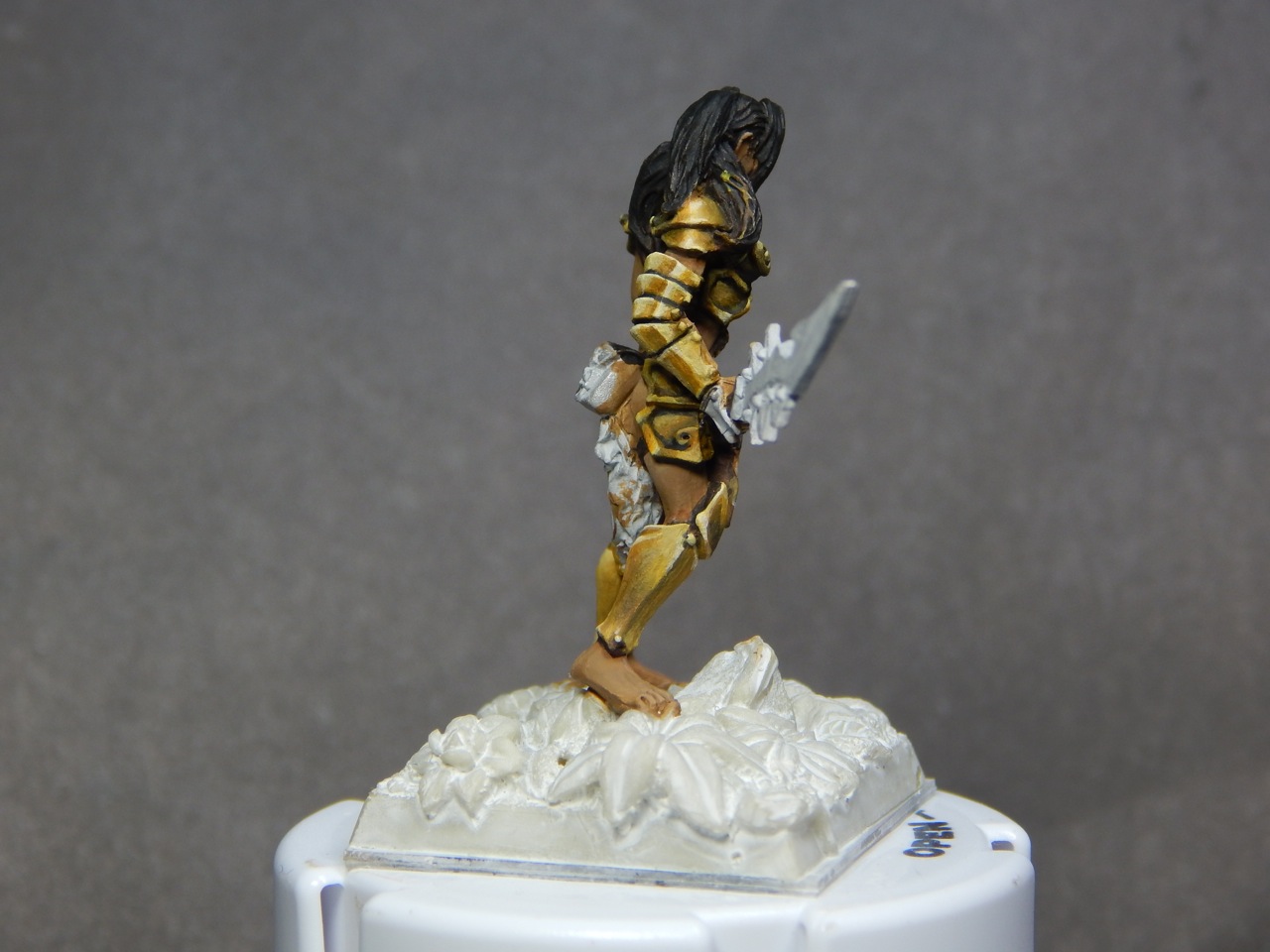
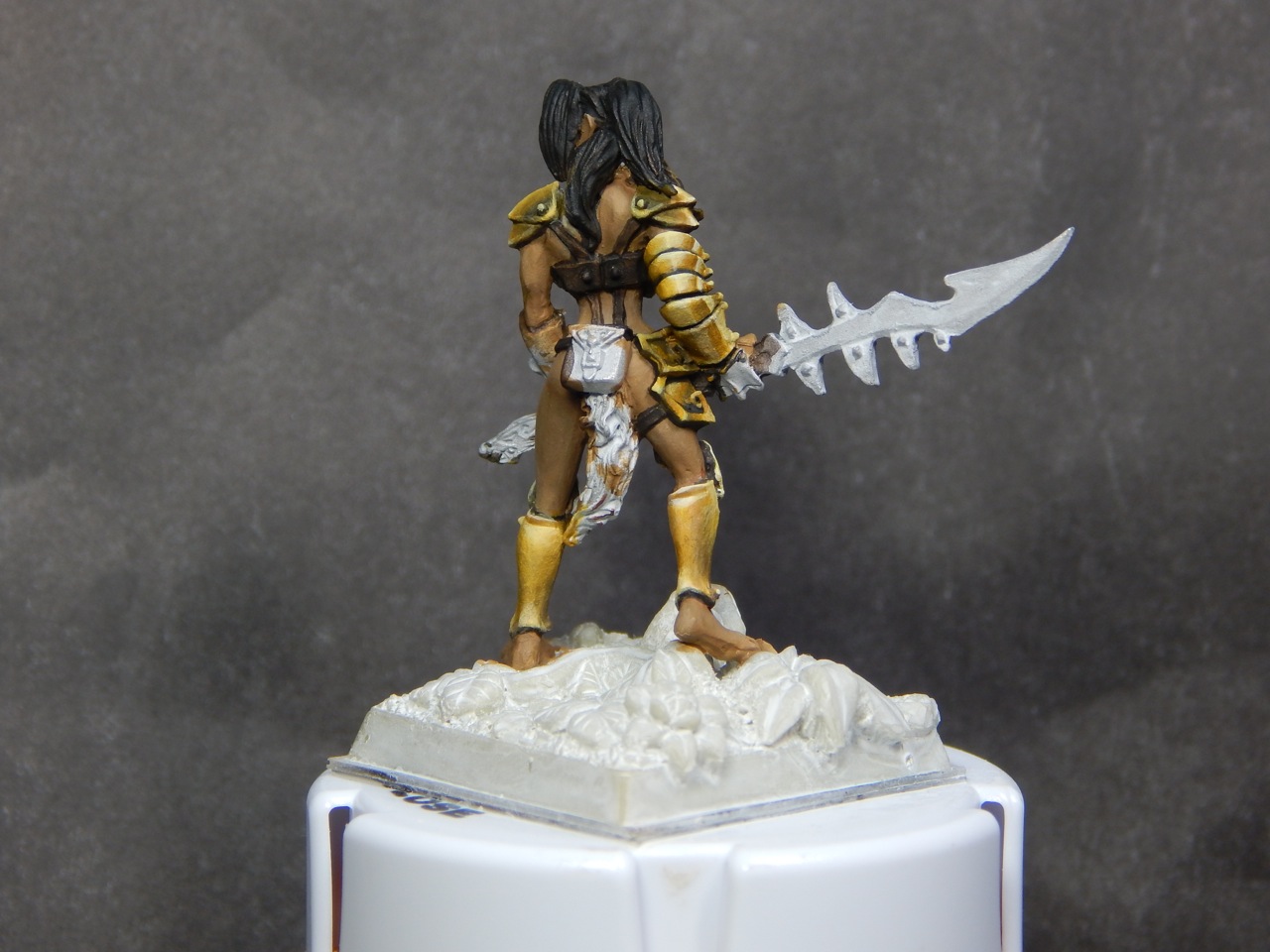
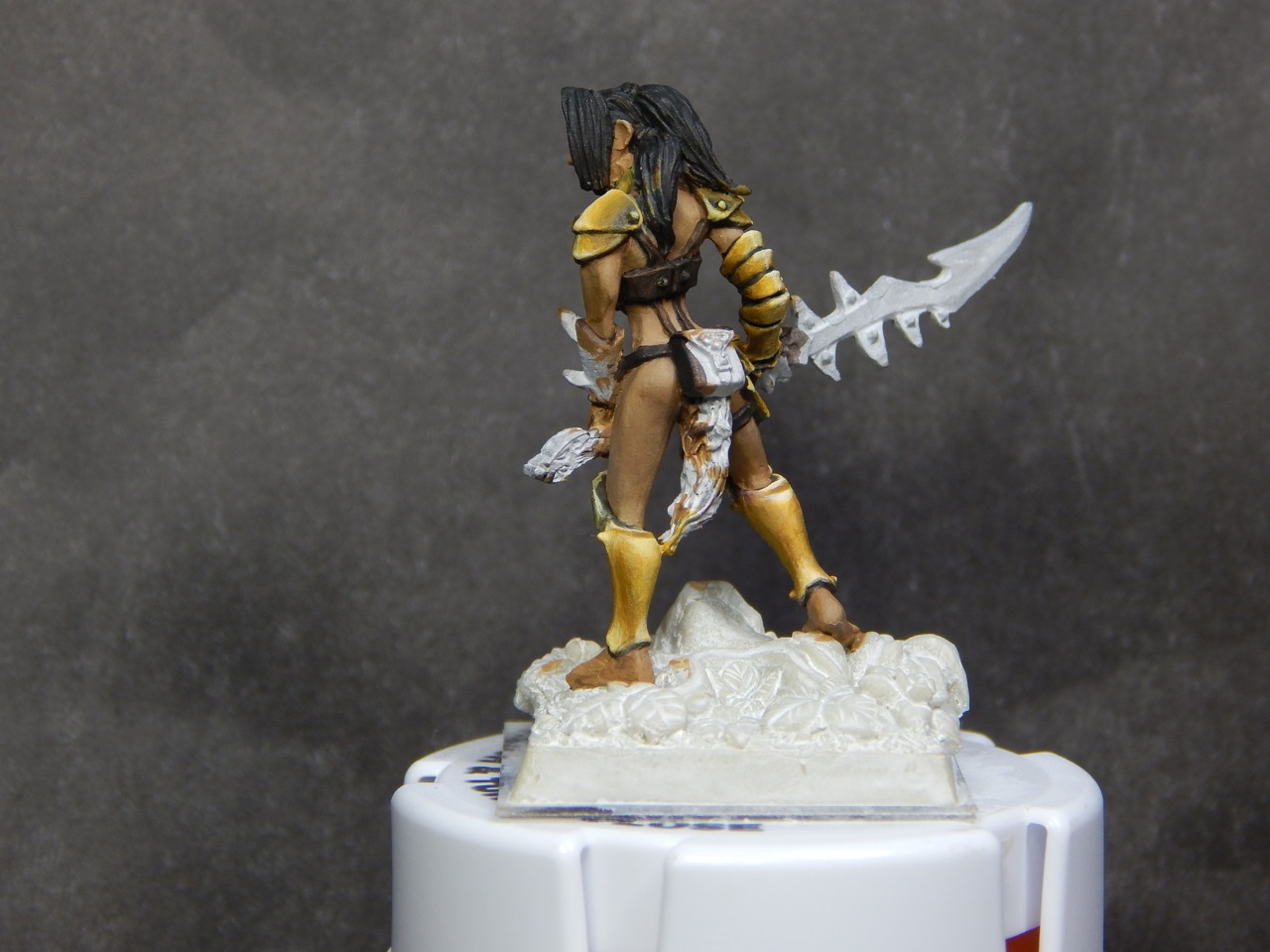
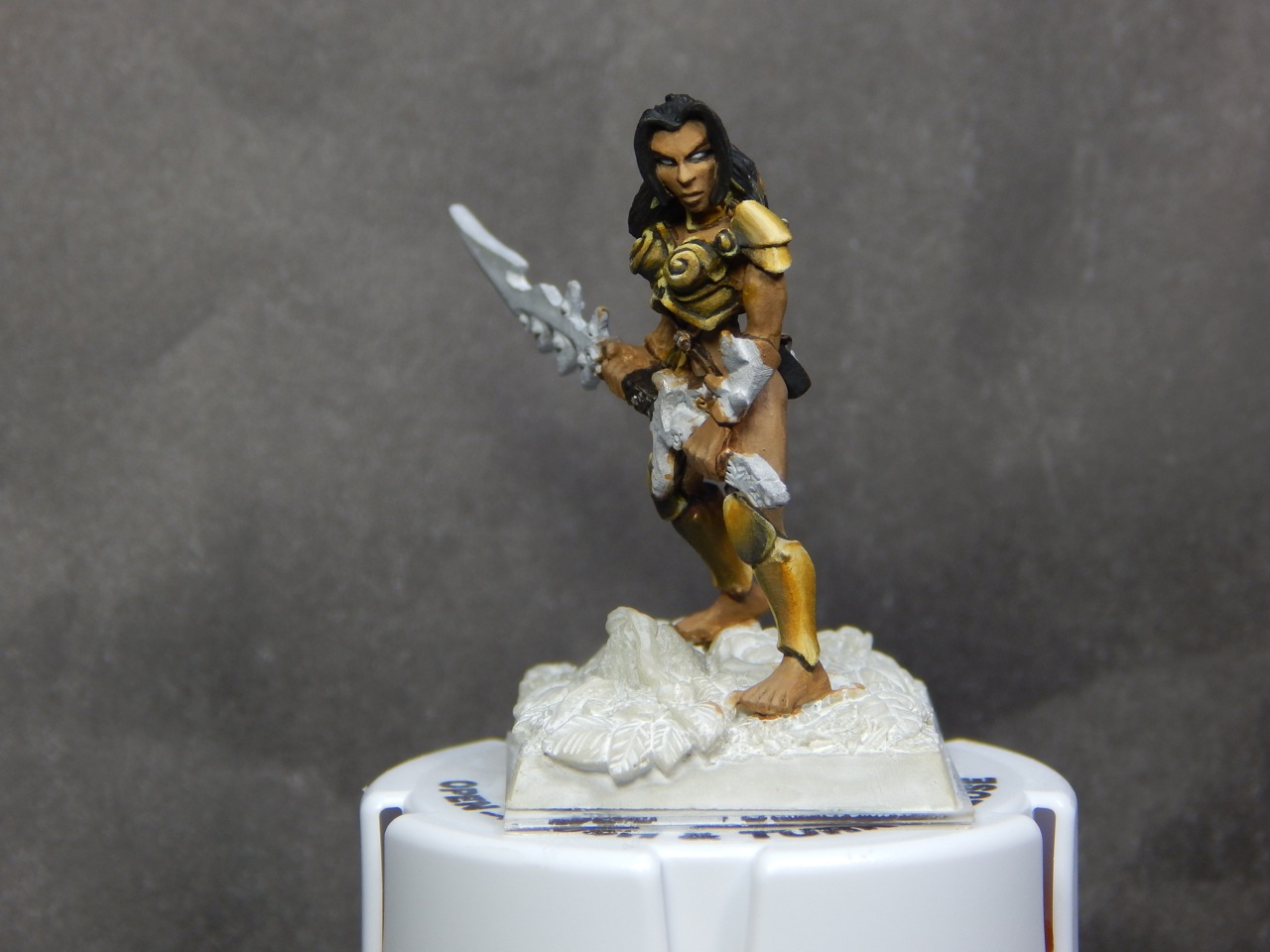
Right now, she's basically only skin color, outlines, and gold NMM. There's plenty of work left to do on her, but she's off to a great start!
